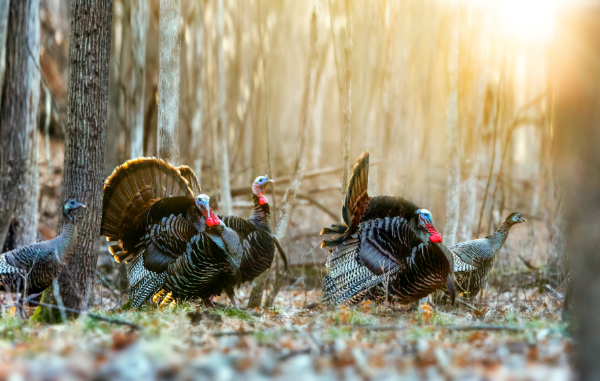EDGEFIELD, S.C. — As part of the National Wild Turkey Federation’s groundbreaking Habitat for the Hatch Initiative, the Missouri NWTF State Chapter is championing innovative conservation efforts by aiding in funding the development of a Turkey Habitat Suitability Index (HSI) model. This project represents a pivotal step toward reversing wild turkey population declines and improving forest and field health across the Southeast.
Unveiled in 2023, the Habitat for the Hatch Initiative aims to enhance over 1 million acres of wild turkey nesting and brood-rearing habitat across the Southeast by 2033. The initiative focuses on proactive habitat management, with the end goal of building more resilient turkey populations and ecosystems on a landscape scale.
To help bring this vision to life, the Missouri NWTF State Chapter is investing in the development of a spatial decision-making tool that will revolutionize how land managers approach habitat improvement. The Turkey HSI model will identify areas where habitat restoration would have the greatest positive impact on wild turkey populations. This effort is a collaboration among the NWTF, the Missouri Department of Conservation and the University of Missouri.
“Identifying where we do and do not have nesting and brooding cover will aid land managers — both public and private — in prioritizing where to put habitat on the ground,” said Nick Oakley, MDC wild turkey biologist. “It may also open some eyes to the scarcity of high-quality nesting and, particularly, brooding cover on the landscape.”
The project will also leverage Light Detection and Ranging (LiDAR) technology to map understory vegetation structure, a key factor in determining habitat quality for turkeys. Traditional imagery has often fallen short in capturing ground-level conditions necessary for brooding and nesting success. LiDAR, however, enables researchers to map canopy cover and understory vegetation height with precision, producing detailed landscape models.
“The ability to map habitat quality across entire landscapes can help us understand the capacity of those landscapes to support turkey breeding and ultimately turkey population growth,” said Thomas Bonnot, Ph.D., assistant research professor at the University of Missouri.
A graduate student at the University of Missouri will be supported by NWTF funding to develop the HSI model, while Missouri Department of Conservation staff and additional LiDAR specialists will contribute critical data and expertise. The model will ultimately produce maps that land managers can use to target habitat treatments — such as tree thinning and prescribed burns — where they’ll do the most good for turkeys.
This science-driven, landscape-level approach exemplifies the goals of Habitat for the Hatch and demonstrates the NWTF’s commitment in wild turkey conservation. By investing in the right tools today, the NWTF is ensuring the future of the wild turkey for generations to come.
In addition to supporting the development of the Turkey Habitat Suitability Index, the NWTF Missouri State Chapter has also previously contributed funding for a video series that complements both the Missouri Department of Conservation’s Turkey Habitat Initiative and the NWTF’s Habitat for the Hatch Initiative.
To learn more about the NWTF’s Habitat for the Hatch Initiative and other conservation priorities, visit www.nwtf.org.
About the National Wild Turkey Federation
Since 1973, the National Wild Turkey Federation has invested over half a billion dollars into wildlife conservation and has positively impacted over 24 million acres of critical wildlife habitat. The NWTF has also invested over $10 million into wild turkey research to guide the management of the wild turkey population and to ensure sustainable populations into perpetuity. The organization continues to deliver its mission by working across boundaries on a landscape scale through its Four Shared Values: clean and abundant water, healthy forests and wildlife habitat, resilient communities, and robust recreational opportunities. With the help of its dedicated members, partners and staff, the NWTF continues its work to provide Healthy Habitats. and Healthy Harvests. for future generations.
Read the full article here




